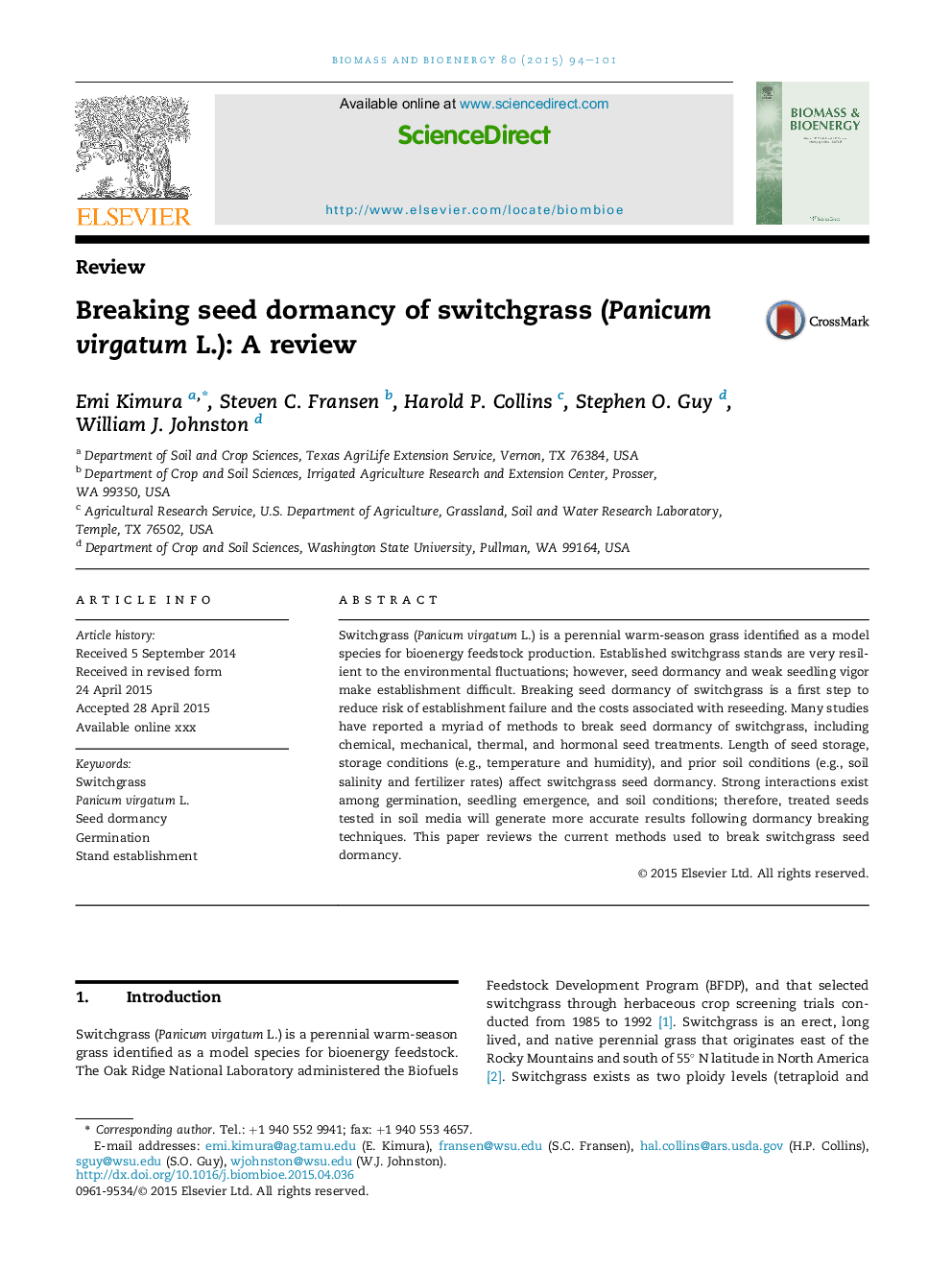| Article ID | Journal | Published Year | Pages | File Type |
|---|---|---|---|---|
| 7063892 | Biomass and Bioenergy | 2015 | 8 Pages |
Abstract
Switchgrass (Panicum virgatum L.) is a perennial warm-season grass identified as a model species for bioenergy feedstock production. Established switchgrass stands are very resilient to the environmental fluctuations; however, seed dormancy and weak seedling vigor make establishment difficult. Breaking seed dormancy of switchgrass is a first step to reduce risk of establishment failure and the costs associated with reseeding. Many studies have reported a myriad of methods to break seed dormancy of switchgrass, including chemical, mechanical, thermal, and hormonal seed treatments. Length of seed storage, storage conditions (e.g., temperature and humidity), and prior soil conditions (e.g., soil salinity and fertilizer rates) affect switchgrass seed dormancy. Strong interactions exist among germination, seedling emergence, and soil conditions; therefore, treated seeds tested in soil media will generate more accurate results following dormancy breaking techniques. This paper reviews the current methods used to break switchgrass seed dormancy.
Related Topics
Physical Sciences and Engineering
Chemical Engineering
Process Chemistry and Technology
Authors
Emi Kimura, Steven C. Fransen, Harold P. Collins, Stephen O. Guy, William J. Johnston,
